✓ Find the best offers on your Stays on 🏡 booking.com
✓ Deals on Private xfers, SIM Cards, City tours, Day trips on 🛵 GetYourGuide | on 🛵 Klook
Tayrona National Park is a natural sanctuary situated on the Caribbean coast of Colombia. The park features stunning beaches, lush forests, and remarkable biodiversity.
What to see or do: Explore the park’s beautiful beaches like Cabo San Juan and La Piscina, hike through the tropical rainforest to observe various wildlife species, visit the ancient archaeological ruins of Pueblito, and go snorkeling to discover a dazzling marine life.
Don’t miss: Witnessing the sunset at Arrecifes beach, admiring the impressive ‘El Pueblito’ ruins, and experiencing the unspoiled beauty of Cañaveral beach.
Insider travel tips: Avoid visiting during peak season (December and January) as the park may get overcrowded. Bring enough cash as there are limited ATMs in the area.
Additionally, be prepared for minimal amenities as the park provides a rustic camping experience.
2. Caño Cristales

Caño Cristales is a river located in the Serrania de la Macarena province of Meta, Colombia.
It is also known as the “river of five colors” or the “liquid rainbow”, due to its strikingly beautiful and vibrant colors.
What to see or do: Visitors can take a guided tour of the river, which includes hiking trails and swimming stops.
The river’s colors change depending on the time of year and water levels, but visitors can experience hues of red, yellow, green, blue, and black.
Don’t miss: The peak season for viewing the river’s colors is between July and November, so plan accordingly.
The best time to visit is during the rainy season (September-November) when the water levels are higher, and the colors are more vivid.
Insider travel tips: Visitors must obtain a permit from the National Natural Parks Agency to visit Caño Cristales, and tours must be arranged through authorized operators.
Keep in mind that the river is located in a remote area of Colombia and requires a significant amount of travel to reach, including a flight to La Macarena and a boat ride up the river.
However, the stunning views and unique experience are well worth the trip.
3. Puracé National Natural Park

Puracé National Natural Park is a protected area in Colombia, known for its diverse flora and fauna, as well as its volcanic landscape.
What to see or do: Visitors can explore the park’s hiking trails that lead to breathtaking views of the Puracé volcano, hot springs, and various waterfalls.
The park is also home to a variety of wildlife such as eagles, pumas, and condors.
Don’t miss: The opportunity to see the majestic Puracé volcano up close – one of the most iconic landmarks of the park. Additionally, the thermal baths located within the park offer a relaxing experience for visitors.
Insider travel tips: Be sure to bring warm clothing as temperatures can drop at higher elevations. Also, hiring a local guide can enhance the experience and provide valuable knowledge about the park’s history and ecology.
4. Chicaque Natural Park
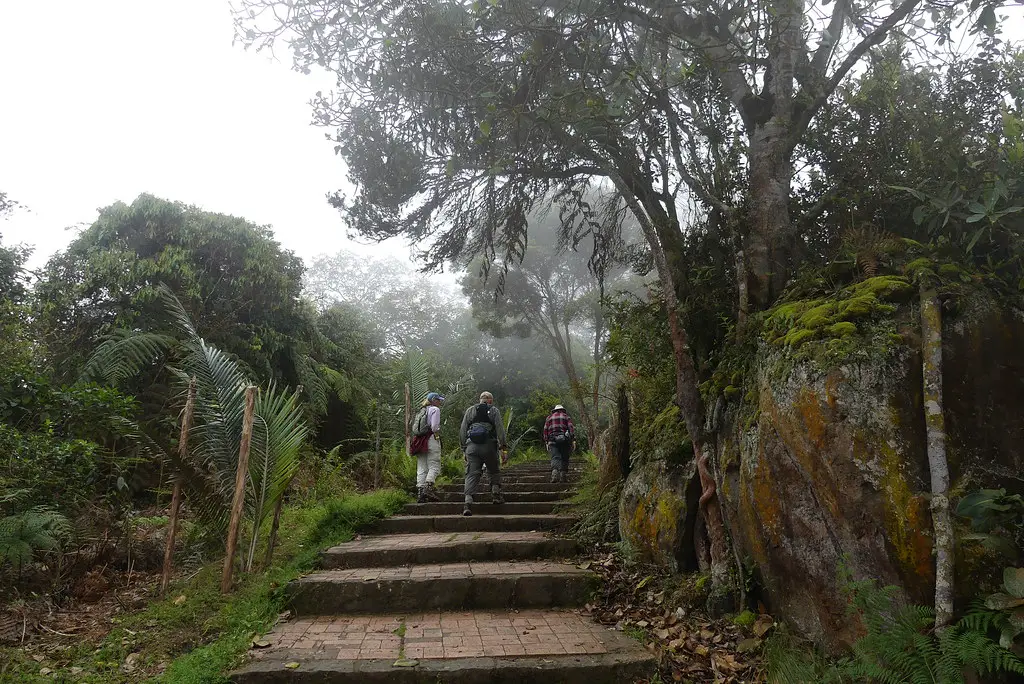
Chicaque Natural Park is a protected area located in the Andean mountains near Bogotá, Colombia.
What to see or do: Chicaque offers visitors many opportunities to immerse themselves in the natural beauty of the area.
There are several hiking trails that range in difficulty, so visitors of all fitness levels can enjoy a hike through the forest.
Birdwatching is also a popular activity, with over 300 species of birds living in the park.
Don’t miss: One of the highlights of Chicaque is the breathtaking views from the viewpoints.
Visitors can take a cable car up to one of the viewpoints and see stunning panoramas of the surrounding Andean mountains and valleys.
Insider travel tips: – Dress in layers, as the temperature can vary throughout the day and it can get chilly at the higher elevations.
5. Guatapé Rock

Guatapé Rock, also known as Piedra del Peñol, is a giant granite rock formation located about 2 hours from Medellin, Colombia.
What to see or do: Climb the rock’s 740 steps to reach the top and enjoy spectacular views of the surrounding landscape.
Guatapé Rock is surrounded by a beautiful reservoir, where you can take a boat tour to see the unique houses, painted with brightly colored murals, that line its shores.
Don’t miss: While at the top, take some time to appreciate the stunning 360-degree views of the surrounding scenery. Make sure to also check out the souvenir shops and restaurants at the base of the rock.
Insider travel tips: -Visit early in the morning to avoid crowds and the heat of the day.
6. Tatacoa Desert
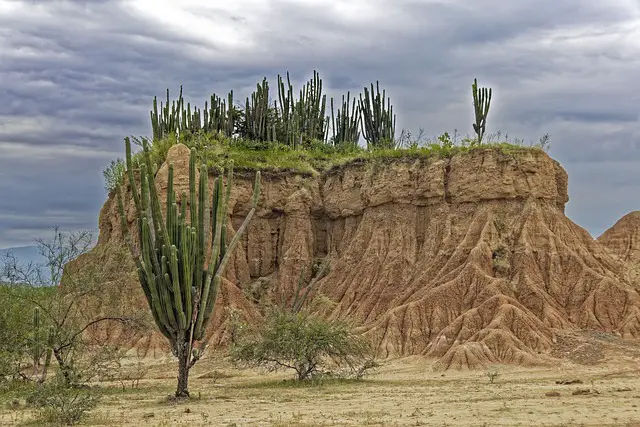
The Tatacoa Desert is a vast and colorful desert located in the Huila Department of Colombia.
What to see or do: The desert landscape is stunning with its red and orange rock formations, cacti, and dry canyons. Visitors can hike or bike through the desert to explore its various attractions.
The desert is also a designated stargazing spot due to its lack of light pollution, making it perfect for night sky observation.
Don’t miss: Don’t miss the Cuzco and Los Hoyos canyons, two of the most popular attractions. Also, make sure to catch the sunset and sunrise views from the top of the viewpoints in the desert.
Insider travel tips: Bring plenty of water, as the desert can get hot and dry. Wear comfortable shoes and sun protection while hiking or biking through the desert.
For a unique experience, spend a night camping in the desert and watch the stars light up the sky.
7. La Piedra del Peñol

A massive rock formation in Guatape, Colombia.
What to see or do: Climb the 740 steps to the top of the rock formation for panoramic views of the surrounding area.
Don’t miss: The colorful town of Guatape at the base of the rock, with its lively markets and vibrant architecture.
Insider travel tips: Wear comfortable shoes for the climb and bring a camera to capture the stunning views from the top. Avoid visiting on weekends or holidays when it can get crowded.
8. San Agustin Archaeological Park

San Agustin Archaeological Park is a UNESCO World Heritage Site located in the southwestern part of Colombia.
Established in 1954, the park is home to the largest group of religious monuments and megalithic sculptures in Latin America, dating back to 3300 BCE.
What to see or do: Visitors can marvel at over 500 ancient statues and monuments scattered across the park, including zoomorphic figures, anthropomorphic sculptures, and tombs.
The valley where the park is located is also home to stunning landscapes, lush forests, and waterfalls.
Don’t miss: Don’t miss the chance to see the largest statue in the park, La Chaquira, which stands at over 6 meters tall and was carved out of a single rock.
The Mesitas A and B, which consist of over 30 tombs, are also a must-see.
Insider travel tips: – Wear comfortable shoes as the park covers a large area with uneven terrain.
9. Chicamocha Canyon
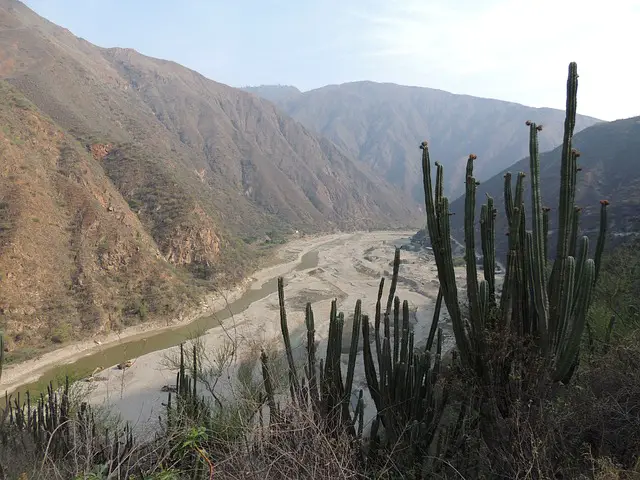
What to see or do: Take a cable car ride over the canyon for breathtaking views, go paragliding, hike through the canyon’s trails, or enjoy a picnic with a view.
Don’t miss: The stunning panoramic views from the lookout points and the opportunity to witness the canyon’s impressive depth of 6,560 feet.
Insider travel tips: Wear comfortable shoes suitable for hiking, bring sunscreen and insect repellent, and arrive early in the morning to avoid crowds and catch the best lighting for photos.
If you enjoy adventure sports, consider visiting during the annual international paragliding festival held in January or February.
10. Cueva de los Guácharos National Park

Cueva de los Guácharos National Park is a protected area in Colombia known for its unique and diverse bird and plant species, with a stunning cave system as its main attraction.
What to see or do: Explore the famous Cueva de los Guácharos cave system, known for its incredible rock formations and underground rivers.
Take a hike through the lush forest trails, keep an eye out for rare bird species such as the Oilbird, and marvel at the stunning waterfalls.
Don’t miss: A guided tour of the cave system, where you’ll learn about the unique ecosystem and its fascinating history. Keep an eye out for the Guácharos, nocturnal birds that can only be found in this region.
Insider travel tips: Wear comfortable and sturdy shoes for hiking. Be sure to bring a jacket as temperatures in the cave can drop.
If you’re interested in birdwatching, hire a local guide to help you spot the rare species. Plan your visit during the dry season (December-March) for the best hiking conditions.
11. El Cocuy National Natural Park

El Cocuy National Natural Park is a protected area located in the Andes mountain range of Colombia. It is known for its magnificent peaks, glaciers, high-altitude lakes, and unique flora and fauna.
What to see or do: Hiking is the main activity in the park, with trails ranging from easy walks to challenging treks that require mountaineering equipment.
Some of the most popular peaks to climb include the Ritacuba Blanco, Pulpito del Diablo, and Toti. The park also offers opportunities for bird watching, camping, horseback riding, and rock climbing.
Don’t miss: The Laguna Grande de la Sierra, a stunning turquoise lake located at an altitude of 4,100 meters, and the Páramo de Guican, a high-altitude ecosystem with unique vegetation and wildlife.
The park also has a number of indigenous communities that offer visitors a glimpse into their traditional way of life.
Insider travel tips: – It is recommended to acclimatize to the altitude for a few days before attempting the more challenging hikes.
12. Uramba BahÃa Málaga National Natural Park

Uramba Bahía Málaga National Natural Park is a protected area in Colombia, situated on the Pacific coast.
What to see or do: – Take a boat tour to see humpback whales, dolphins, and sea turtles in their natural habitats.
Don’t miss: – Whale watching season, which typically runs from July to October, when thousands of humpback whales migrate to the warm waters of the Pacific Ocean to breed and give birth.
Insider travel tips: – Plan your trip between July and October to see humpback whales in their natural habitats.
13. The Salt Cathedral of Zipaquirá

An underground cathedral carved out of a salt mine 200 meters below the surface.
What to see or do: Admire the beautiful salt carvings, visit the stations of the cross, and attend a Catholic mass.
Don’t miss: The breathtaking view of the main hall illuminated by colorful lights.
Insider travel tips: Avoid visiting on weekends to avoid the crowds and take a guided tour to learn about the history and symbolism behind the cathedral’s design.
Also, be sure to wear comfortable shoes and bring a jacket as the temperature in the mine can be chilly.
14. SerranÃa de la Macarena National Natural Park

Serranía de la Macarena National Natural Park is a stunning protected wilderness area in the Meta department of Colombia.
What to see or do: Visitors can explore the diverse ecosystems of the park, including tropical rainforest, savannah, and mountainous terrain.
The park is also home to the famous Caño Cristales, a river known for its remarkable collection of colors from red to green and blue to yellow.
Visitors can hike to the river and swim in the cool, clear waters.
The park also offers opportunities for birdwatching, camping, and learning about the indigenous cultures that have lived in the area for generations.
Don’t miss: Caño Cristales is the park’s most famous attraction, but it’s not the only natural wonder worth seeing.
Other popular sights include the massive rock formations known as La Macarena, the Guayabero River, and the cascades of the Los Cuarzos waterfall.
If you’re lucky, you may even spot some of the park’s resident wildlife, including monkeys, jaguars, and giant otters.
Insider travel tips: The park is only accessible by plane or boat, so make sure to plan your transportation in advance. The best time to visit is between June and November when the Caño Cristales river is at its most colorful.
However, keep in mind that this is also the busiest time of year, so book accommodations and tours early. Finally, make sure to pack plenty of sunscreen, bug spray, and comfortable hiking shoes.
15. Sumapaz Páramo

Sumapaz Páramo is one of the largest and most biodiverse páramo ecosystems in the world. It is located in the Andean region of Colombia and spans across four different departments.
What to see or do: Visitors can enjoy hiking, bird watching, and taking in the stunning natural landscapes.
The páramo is home to a variety of flora and fauna, including the endemic Sumapaz Páramo bird and the Andean condor.
Don’t miss: The Laguna de Chingaza, a beautiful lake surrounded by mountains. Also, be sure to take a guided tour with a local expert to get the most out of the experience.
Insider travel tips: Be sure to bring warm clothing, as temperatures can get chilly at high altitudes.
It’s also recommended to hire a local guide for safety reasons and to learn more about the area’s history and culture.
Finally, remember to respect the environment and the local communities when visiting.
16. El Rosario National Park

El Rosario National Park is a protected area located in the mountains of Mexico’s central region.
What to see or do: The park’s primary attraction is the Monarch Butterfly Biosphere Reserve, one of the few places in the world where millions of monarch butterflies migrate to each year.
Visitors can take guided tours to see these magnificent creatures up close. Additionally, El Rosario National Park features stunning views of the surrounding mountains, hiking trails, and camping facilities.
Don’t miss: Watching the sunrise or sunset over the surrounding mountains. It’s an unforgettable and breathtaking experience.
Insider travel tips: Dress warmly as the temperatures in the mountains can be cooler than expected. Wear comfortable shoes for hiking, and bring binoculars to get the best possible view of the butterflies.
Additionally, be sure to arrive early in the morning or late in the afternoon for the best chance to see the butterflies.
17. El Corchal “El Mono Hernandez” Flora and Fauna Sanctuary

El Corchal “El Mono Hernandez” Flora and Fauna Sanctuary is a protected natural area located in the department of Tolima, Colombia.
What to see or do: Visitors can hike through the sanctuary’s lush forests and observe the diverse flora and fauna found in the region.
The sanctuary is home to a variety of endangered species, including the Brown Spider Monkey, also known as “El Mono Hernandez” which the sanctuary is named after.
Don’t miss: Don’t miss the opportunity to see the Brown Spider Monkey in its natural habitat. Visitors can also explore the area’s picturesque waterfalls and swim in the emerald-green river.
Insider travel tips: Visitors should be prepared for a challenging hike, as the trails can be steep and difficult to navigate in some areas.
It is recommended to bring plenty of water, sunscreen, and insect repellent. The best time to visit the sanctuary is during the dry season, from December to March.
Also, it is important to respect the flora and fauna and not disturb the natural environment.
18. Cerro Nutibara

Cerro Nutibara is a small hill located in the city of Medellín, Colombia.
What to see or do: Visitors can hike to the top of the hill and enjoy panoramic views of the city.
At the top, there is also the Pueblito Paisa, a replica of a traditional Colombian village that showcases local customs, food, and handicrafts.
Additionally, there is a botanical garden and a sculpture park.
Don’t miss: The Pueblito Paisa, a charming representation of a typical Colombian town, offers a glimpse of the country’s cultural heritage.
The view from the top of the hill is also a must-see, with stunning views of the city and the surrounding mountains.
Insider travel tips: Cerro Nutibara can get crowded during weekends and holidays, so it’s best to visit during weekdays if possible.
The hike to the top of the hill can be steep and challenging for some, but there are alternative modes of transportation available, such as cable car and public buses.
The nearby botanical garden and sculpture park are also worth exploring.
19. La Cocha Lake

La Cocha Lake is a scenic alpine lake located in the Nariño department of Colombia, with a surface area of 4,000 hectares.
What to see or do: Visitors can take in the majestic views of the surrounding Andes mountains and the serene blue waters of the lake.
The lake is known for trout fishing and visitors can hire a boat for fishing excursions as well as to navigate through the lake.
The area around the lake is also great for hiking and horseback riding.
Don’t miss: Don’t miss the chance to taste some of the local trout dishes at the nearby restaurants, as well as the beautiful Mirador de la Virgen, a scenic viewpoint that offers panoramic views of the lake and its surroundings.
Insider travel tips: – It’s best to visit La Cocha Lake in the dry season (December to February and June to August) to avoid the rainy season.
20. La Vieja River Canyon

A picturesque canyon located in the Colombian Andes, formed by the erosion of the La Vieja River over millions of years.
What to see or do: Visitors can hike along the rim of the canyon, taking in stunning views of the colorful rock formations and lush vegetation.
The river itself offers opportunities for whitewater rafting and kayaking.
Don’t miss: The viewpoint at Mirador La Garganta del Diablo, which offers a breathtaking panoramic view of the canyon and its surroundings.
Insider travel tips: The best time to visit is during the dry season, from December to February, when the water levels are lower and the views are clearer.
Bring sunscreen, a hat, and plenty of water for the hike, as the trail can be steep and strenuous.
It’s also recommended to hire a local guide for the trek, as they can provide valuable insights into the history and ecology of the area.

An island located in the southern tip of Chile, in the region of Patagonia.
What to see or do: Navarino Island offers incredible natural landscapes, including lush forests, snow-capped mountains, glaciers, and crystal-clear lakes.
Visitors can hike through the Dientes de Navarino mountain range, go bird-watching, fishing, kayaking, or sail to the remote Cape Horn.
Don’t miss: Puerto Williams, the southernmost town in the world, offers several attractions, such as the Martin Gusinde Anthropological Museum, the Yámana Museum, and the Cape Horn Biosphere Reserve.
Insider travel tips: The best time to visit Navarino Island is during the summer months, from December to February, when the weather is milder and daylight lasts longer.
Travelers should dress in layers and bring proper gear for outdoor activities, as the weather can change quickly. It’s also important to book tours and accommodations in advance, as the island has limited infrastructure and services.
22. Amacayacu National Natural Park

Amacayacu National Natural Park is a protected area located in the Colombian Amazon Basin.
What to see or do: Visitors can experience the rich biodiversity of the area through activities such as jungle walks, canoe rides, bird watching, and observing pink river dolphins.
Don’t miss: The chance to visit the indigenous communities within the park to learn about their culture and way of life.
Insider travel tips: – Be prepared for hot and humid weather, and bring insect repellent.
23. Sierra Nevada del Cocuy National Natural Park
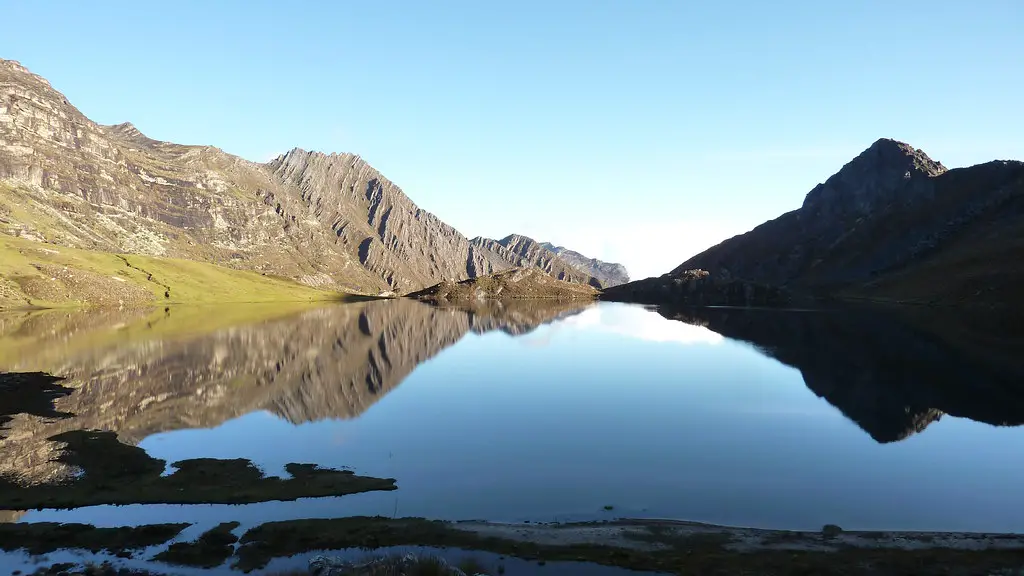
Sierra Nevada del Cocuy National Natural Park is a protected area in the Colombian Andes, known for its stunning snow-capped peaks and glaciers.
What to see or do:
Don’t miss:
Insider travel tips:
24. San Antonio de los Cobres Salt Flats

San Antonio de los Cobres Salt Flats are vast salt flats located in the Argentine northwest, near the town of San Antonio de los Cobres.
What to see or do: The salt flats are a mesmerizing white landscape, where the only sound you’ll hear is the crunching of salt under your feet.
You can walk and explore the vast and strange looking salt formations. Hiking or biking tours are available to discover the surroundings.
Don’t miss: As for the location itself, the Salinas Grandes are the most stunning salt flats – an astonishing sight at any time but especially dramatic at sunset.
Insider travel tips: Bring sunscreen and sunglasses – the sun can be pretty strong during the day.
Also, bringing some snacks and plenty of water is a good idea, as there are no stores or cafes in this remote location.
25. Los Flamencos Sanctuary
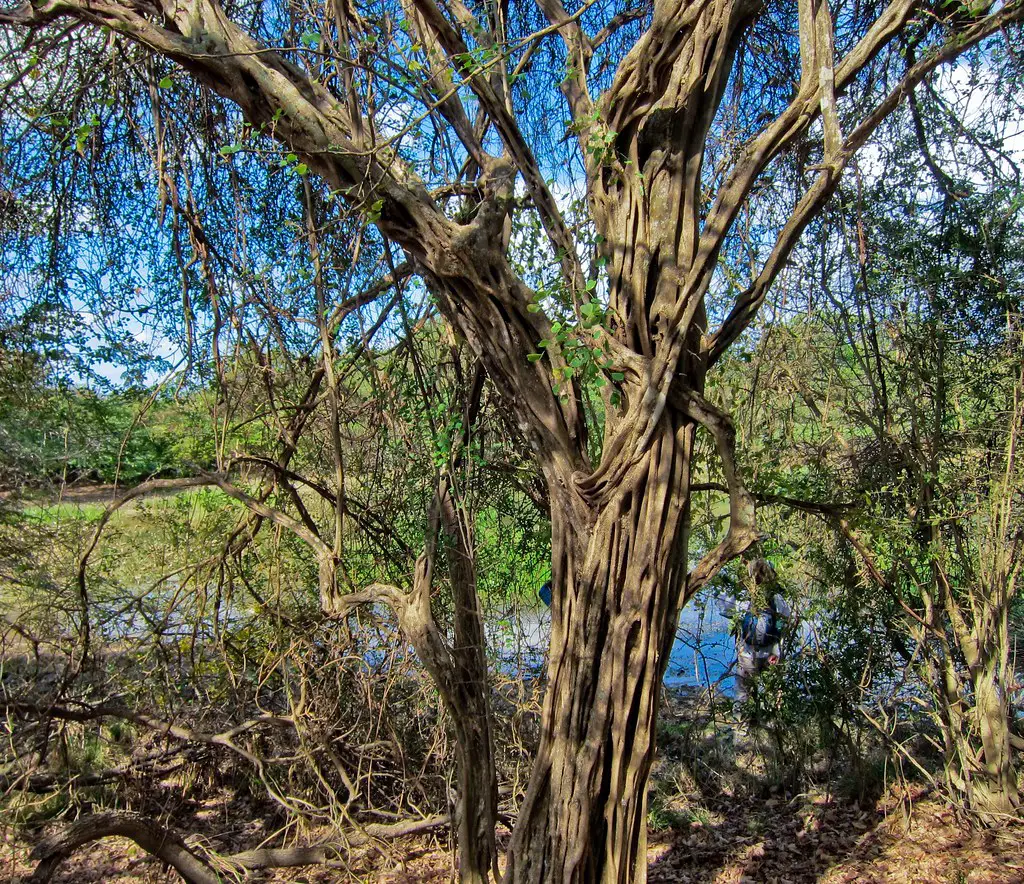
Los Flamencos Sanctuary is a protected area located in the Atacama Desert, Chile.
The sanctuary is a crucial habitat for the Flamenco (or Andean) flamingo, one of the rarest bird species in the world.
What to see or do: Visitors can observe the majestic pink flamingos up close in their natural habitat, along with other bird species such as the Chilean Flamingo, Andean Avocet, and Puna Plover.
The awe-inspiring landscapes of the salt flats and sand dunes of the Atacama Desert also make for a unique experience.
Don’t miss: A boat ride through the salt flats of the Chaxa Lagoon is a must-do to catch a glimpse of the flamingos and their reflection in the clear waters.
Don’t forget to bring a pair of binoculars to get an even closer view of these elegant creatures.
Insider travel tips: The best time to visit Los Flamencos Sanctuary is between November and March, during the warm summer months in Chile.
While it’s possible to visit the sanctuary on a day trip from the nearby town of San Pedro de Atacama, it’s recommended to spend at least two days in the area to fully appreciate the surroundings.
Also, make sure to bring sunscreen, a hat, and plenty of water, as the Atacama Desert can be extremely hot and dry.
26. Gorgona Island
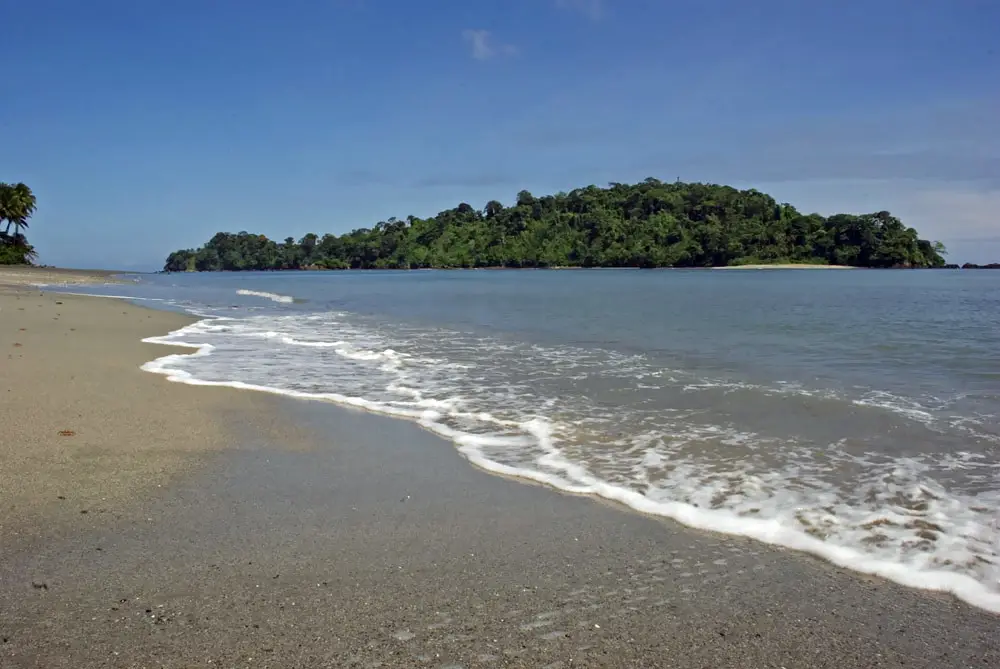
Gorgona Island is a small island located off the Pacific coast of Colombia, known for its lush natural beauty and diverse wildlife.
What to see or do: – Take a guided tour of the island’s natural park and see exotic plants and animals, including monkeys, turtles, and humpback whales.
Don’t miss: The opportunity to see humpback whales, which migrate to Gorgona Island from July to October every year.
Insider travel tips: – Plan your visit between June and October for the best chance to see various species of whales, dolphins, and sea turtles.
27. Sierra de la Macarena
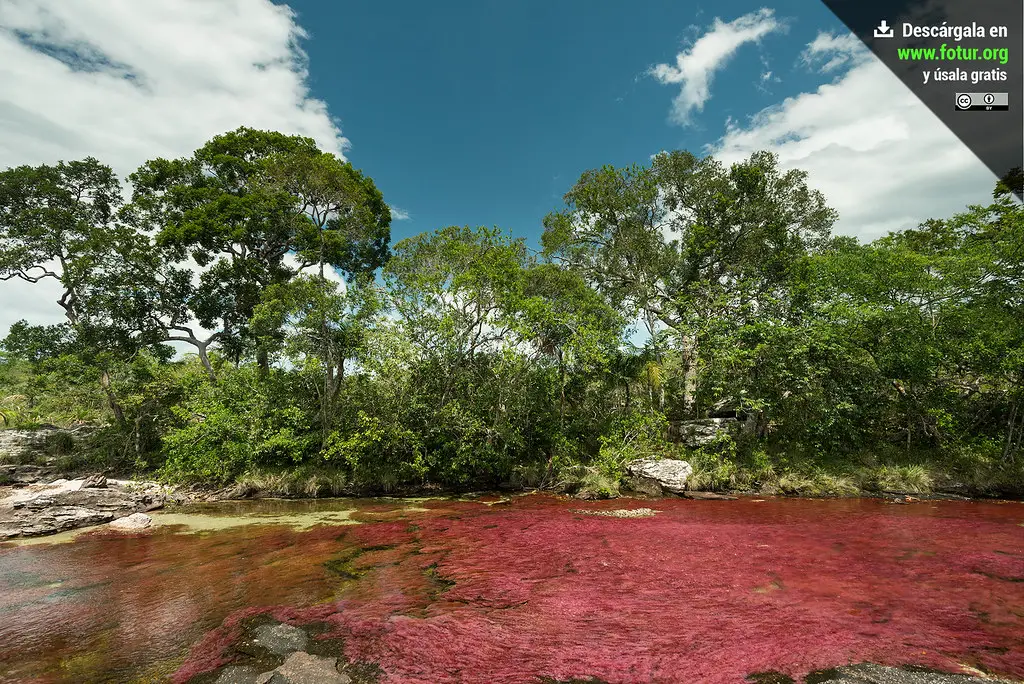
A mountain range located in central Colombia, known for its unique biodiversity and stunning landscapes.
What to see or do: – Explore the beautiful natural scenery and landscapes while hiking or trekking through the mountains.
Don’t miss: – The opportunity to see the incredible “liquid rainbow” of Caño Cristales. It is only accessible during certain times of the year, so plan accordingly.
Insider travel tips: – Visit during the dry season (June to November) for the best chance of seeing Caño Cristales in full bloom.
28. Galeras Volcano
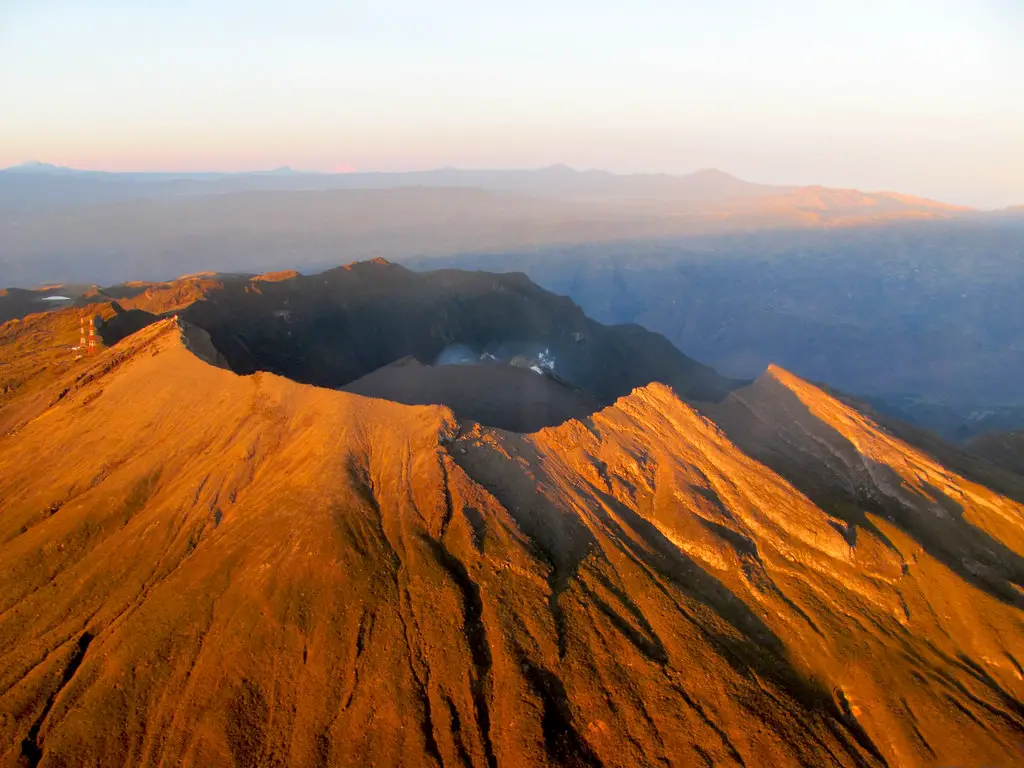
Galeras Volcano is an active stratovolcano located in the Andes mountain range of southwestern Colombia.
What to see or do: Visitors can take guided hikes to the summit of the volcano to enjoy stunning panoramic views of the surrounding landscape. The hike takes about 6 hours and is considered strenuous due to the altitude and rugged terrain.
Don’t miss: Don’t miss the opportunity to visit the “hot spots,” which are vents that emit sulfur gases and steam.
Also, take the time to visit the Galeras Volcano Observatory, which provides visitors with information about the history and geology of the area.
Insider travel tips: Travelers are advised to bring warm clothing and rain gear as weather conditions can change rapidly on the mountain.
It’s also essential to hire an experienced guide since the hike can be challenging and dangerous without proper knowledge and equipment.
Visitors should always pay attention to the volcano’s activity alerts and safety instructions provided by the park authorities.
✓ You on Insta? 👍@triplyzer✓ Find the best offers on your Stays on 🏡 booking.com
✓ Deals on Private xfers, SIM Cards, City tours, Day trips on 🛵 GetYourGuide | on 🛵 Klook